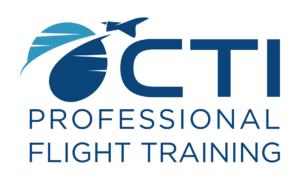5 Airplanes that Transformed Flight
The world’s first flight took place on December 17, 1903. Most people know the pilot was Orville Wright. It took another 30 years for aircraft design to reach new levels of innovation. Aviation advanced with every new model, but some models stood out as truly transformative. Let’s take a look at five airplane designs that forever transformed flight.
Benoist XIV – 1914
The world’s first scheduled airline was an open-cockpit biplane flown by the St. Petersburg-Tampa Airboat Line. The flight covered 18 miles, but the 23-minute flight saved 11 hours versus traveling by rail which was the only other option at the time. Because there was only enough space for one passenger the business wasn’t sustainable and closed after three months. The cost of that one-way ticket of 18 miles had a cost equivalent to $123 today.
Douglas DC-3 – 1936
Engineered and designed for cross-country flight the DC-3 could travel 1,500 miles, seat 28 passengers, and hit speeds up to 192 mph. Designed with comfort and profitability in mind, it was the first plane the enabled airlines to haul passengers without relying on subsidies. 90% of passengers were flying in DC-3s by 1939.
DE Havilland D.H. 106 Comet – 1952
The British designed and manufactured Comet was the world’s first jet airliner. Powered by four Rolls Royce engines, the Comet travel distance surpassed 3,000 miles at speeds over 500 mph and seated 100 passengers. The jet airliner flew higher and faster than all the previous propeller-driven airliners before it. However, in 1954 two Comets crashed when the fuselages broke apart, and by the time the company resolved the issue, the Comet lost its top place in the market to the Boeing 707 and Douglas DC-8.
Boeing 707 – 1958
The Boeing 707 set the foundation for the market dominance Boeing still enjoys today. It became the standard for modern commercial aircraft design. The location of passenger doors on the left side at the front and rear of the cabin still holds today. Over 1,000 707s were produced for civilian use. Today, most 707s have been converted to freighters.
Boeing 747 – 1969
Nearly a decade after the 707 Boeing released the 747 airliner and revolutionized travel. With high speeds of 640 mph, long-range capability of over 6,000 miles, and seating capacity of nearly 500, the 747 dramatically lowered air ticket costs. The 747 was the largest airliner until the release of the Airbus A380 in 2007.
Want to Sit in the Captain’s Chair of the Next Revolutionary Airplane?
If you like the idea of being a part of aviation innovation and all it brings to civilization there is no better time than now to become a pilot. A career as a commercial airline pilot is one of the most rewarding things you can do if you like the idea of spending your days in the skies. Demand is high and salaries are fantastic. Get started by requesting a tour at one of our CTI flight school campuses.
